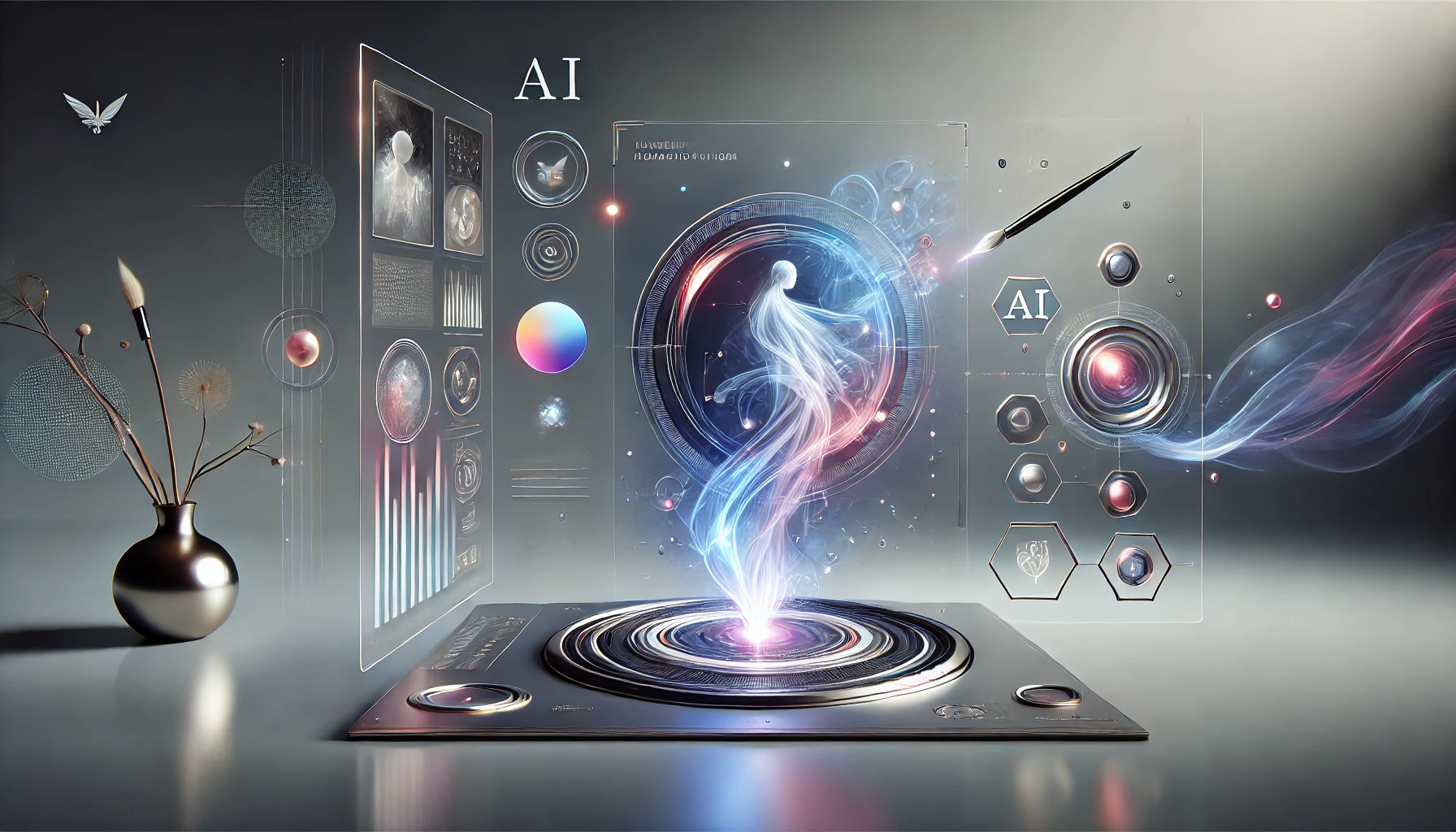Tech in Transition: How AI, Smart Devices, and Synthetic Media Are Redefining Our Digital World
Author: Staff Writer

In a single week that felt like a crosswind of headlines, the technology landscape once again reminded us that consumer devices, enterprise AI, and the politics of synthetic media are increasingly interconnected. On one end of the spectrum, shoppers were drawn to a heavily discounted Samsung Galaxy Tab A9+ bundle that comes with a year’s Gemini Pro service, underscoring how manufacturers and retailers are packaging AI-enabled perks as a differentiator in a crowded tablet market. On the other end, courts in India were grappling with the political and social implications of AI-generated content, ordering parties to remove a deepfake-style video and signaling that governance of synthetic media is moving from concern to consequence. Between these moments, advances in AI—from 3D model generation to AI-powered image tools—are seeping into every corner of business and daily life.
The consumer tech news week began with a reminder that the most powerful devices are often the ones that feel like a bargain. The Sun highlighted a deal on the Samsung Galaxy Tab A9+ with a price cut to £146.9 and a bundle that allegedly includes Gemini Pro perks for a full year. Such offers reflect a broader trend: AI-driven features, cloud services, and ecosystem perks are becoming standard levers in hardware promotions. While the exact terms of the bundle can be hard to verify from outside the retailer’s site, the appeal is clear—affordable, capable tablets that integrate with a growing suite of AI tools and services. The broader implication is that shoppers increasingly expect more than hardware: a platform of services, ongoing updates, and a sense of investment in the future of AI-enabled experiences. The campaign around this tablet mirrors a larger market push where hardware is inseparable from software services like cloud processing, AI assistants, and secure ecosystems.

Samsung Galaxy Tab A9+ on sale, bundled with Gemini Pro perks in a promotion highlighted by mainstream tech coverage.
Meanwhile, the rollout of One UI 8, built on Android 16, underscored how manufacturers are weaving AI-powered features into core software experiences. Reports across Deccan Herald and other outlets highlighted that Samsung is extending its One UI 8 update to Galaxy S, A, Z foldables, and tablets, with new AI-assisted capabilities designed to streamline everyday tasks, tighten security, and offer smarter automation. The conversation around One UI 8 is not merely about version numbers; it’s about how machine-learning features—predictive text, better on-device privacy, adaptive interfaces, and enhanced security flags—shape how users interact with devices. In markets like India and the US, these updates are a practical reminder that consumer devices no longer exist in isolation: they are nodes in a broader AI-enabled ecosystem that includes app ecosystems, cloud services, and cross-device synchronization.

One UI 8 brings smarter AI features to Galaxy devices, with emphasis on usability and security for a wide range of devices.
In the land of consumer electronics, AI is no longer a curiosity but a feature set that vendors promote as a value proposition. While the Galaxy Tab A9+ story centers on a consumer discount, other reports showed immersive AI endeavors designed to enchant developers and creators. Casio’s Moflin, an AI-enabled pet introduced to the market, is pitched as an emotionally responsive companion able to exhibit a range of behaviors—announcing Casio’s continued interest in AI’s capacity to inhabit everyday life beyond screens. Digital Trends framed Moflin as a pet that offers companionship without the logistical concerns of real-world care, highlighting the dual-edged nature of AI companions: the comfort of responsive interactions alongside questions about attachment and authenticity. Such products signal a broader consumer enthusiasm for AI-driven experiences that blur the line between tool and companion.

Casio Moflin AI pet positions AI as a companion, not just a gadget, expanding what ‘smart’ can mean in everyday life.
Beyond devices and consumer features, the technology landscape is seeing rapid growth in AI-enabled enterprise tools. A market update from OpenPR highlights a sector often hidden behind enterprise gloss but increasingly central to corporate strategy: the Enterprise Idea and Innovation Management Software market is predicted to reach around USD 2.5 billion by 2033. This forecast illustrates a shift from isolated software solutions to integrated platforms that help organizations manage ideation, collaboration, and governance at scale. Such software is increasingly infused with AI capabilities—automated idea screening, sentiment analysis, trend detection, and workflow orchestration—that enable teams to capture creativity, reduce time to market, and align innovation with strategic goals. This trend is not about replacing human imagination but about augmenting it with structured processes that scale ideas into tangible outcomes.

OpenPR image illustrating the growing importance of AI-enabled innovation management software in modern enterprises.
The market for AI in computer vision is another area where enterprise-grade capabilities are shaping business operations. OpenPR’s latest briefing on AI in Computer Vision outlines how AI-enabled object tracking and classification are becoming standard across industries—from manufacturing and logistics to healthcare and media. The ability to monitor, identify, and predict events in real time empowers organizations to automate complex tasks, improve safety, and optimize workflows. As these systems become more capable, they also raise questions about data governance, bias, and the balance between on-device processing and cloud-based inference. The overarching narrative is one of increasing interoperability: AI tools must talk to existing data pipelines, imaging hardware, and enterprise software to deliver reliable results.

The AI in Computer Vision market is expanding, underpinning smarter, more autonomous systems across industries.
Technology is also progressing in the realm of 3D AI model generation. Tencent’s Hunyuan 3D 3.0 marks a significant advance in AI-assisted 3D content creation, tripling the accuracy of its predecessor and enabling models at resolutions up to 15363 with 3.6 billion voxels. Notebookcheck describes a layered generation process that yields more realistic characters, textures, and geometry, while also addressing common flaws that plague AI-created 3D assets. The plan to offer a free-to-use base model with a professional edition in testing and an open-source release in the future signals a push to democratize access to high-fidelity 3D content creation. For developers, artists, and game creators, such a tool could shorten the iteration cycle, enabling rapid prototyping and more immersive virtual experiences.

Tencent’s Hunyuan 3D 3.0 pushes the boundaries of AI-driven 3D content creation.
Meanwhile, the creative-technology toolbox continues to expand with image-generation platforms that put powerful tools in users’ hands. PCQuest’s guide on using DALL·E 3 to generate and edit AI images demonstrates how open-ended prompts can be transformed into professional-grade visuals. The article walks readers through the process of crafting prompts, refining outputs, and leveraging AI to edit existing images—an area that raises questions about originality, attribution, and the evolving definition of authorship in the age of AI-generated art. The practical takeaways—structuring prompts, iterating with feedback, and integrating AI tools into design workflows—are universal across sectors, from marketing to product development.

A practical primer on using DALL·E 3 for generating and editing AI images.
But AI in media and politics also presents a complex frontier. Indian courts recently ordered the removal of AI-generated content that depicted Prime Minister Narendra Modi and his late mother, a decision that underscores the legal and ethical sensitivities surrounding synthetic media. Business Standard reported that the Patna High Court directed the Congress to withdraw such content from social media platforms and issued notices to the political party and tech giants alike. OdishaBytes later summarized the verdict and its implications, highlighting how judiciary actions reflect a growing push to regulate mis- and disinformation in the politics of information. The cases illuminate a broader global concern: as AI becomes more accessible, so too does the risk of misrepresentation that can influence public opinion and electoral outcomes. The legal landscape is still taking shape, with courts grappling with questions of consent, copyright, and safety in the digital public square.

Patna High Court orders removal of AI-generated video depicting PM Modi’s mother from social media.
Additionally, industry observers note the need for governance around AI-generated media and platform responsibility. This week’s headlines—ranging from enterprise AI and 3D model generation to AI-assisted design tools and consumer devices—underscore a broader transition: AI is now a ubiquitous layer that informs how products are designed, how media is created, and how citizens experience information. The shift is not simply about smarter gadgets; it’s about building an ecosystem where AI amplifies human creativity while accountability mechanisms—courts, regulators, and industry standards—keep pace with the speed of innovation. As companies invest in AI capabilities, policymakers are increasingly considering frameworks that balance innovation with privacy, security, and the right to accurate information.

HC orders to remove AI-generated video from social media, illustrating the regulatory attention around synthetic media.
Looking ahead, the tech-news mosaic suggests a future where consumer devices, enterprise software, and AI-enabled media are not separate streams but converging tracks. The price promotions on tablets may reveal growing consumer demand for AI-enabled convenience. One UI 8 and similar updates will shape the baseline expectations for everyday users—ease of use, privacy, and smarter interactions—while AI tools in design and manufacturing will accelerate product development and time-to-market. In parallel, courts and regulators will attempt to keep the pace with creators who push the boundaries of what AI can generate. The challenge will be to cultivate an environment where innovation thrives, but misinformation is mitigated, and where businesses, educators, and public institutions can harness AI's capabilities without compromising trust.